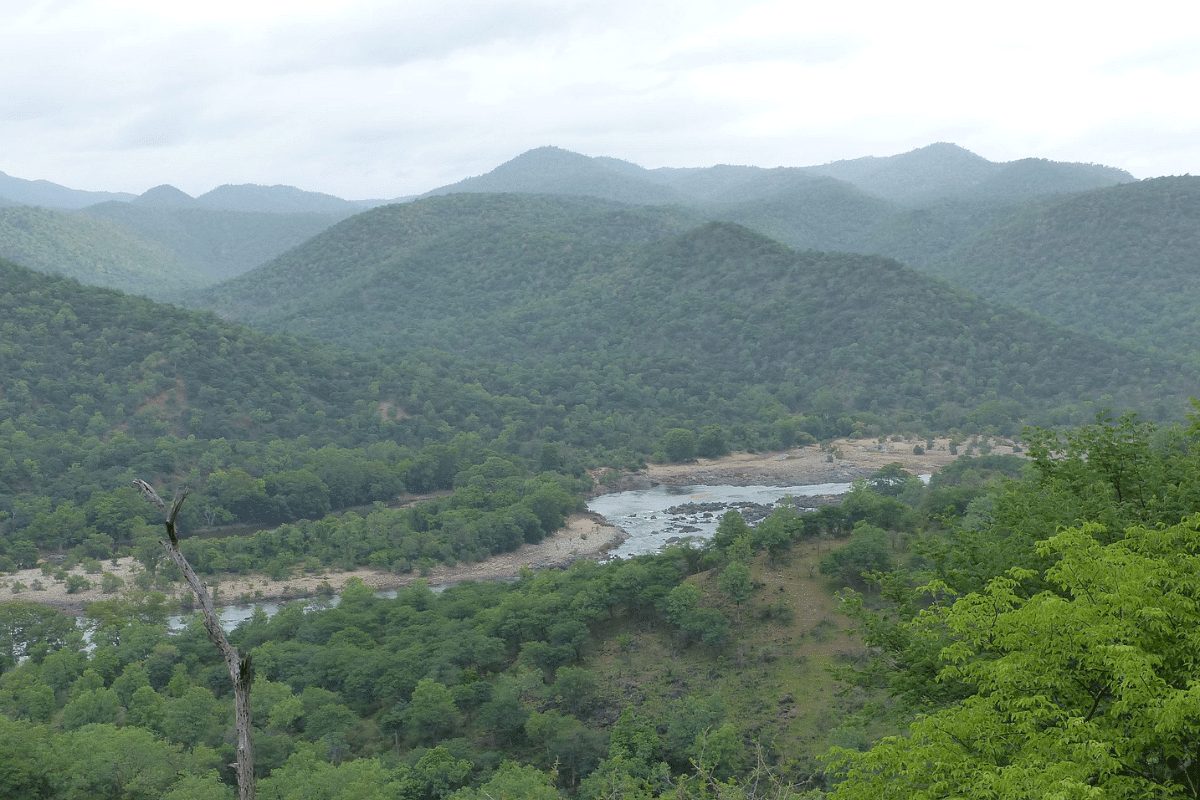Science
Tamil Nadu Gets Its Seventeenth Wildlife Sanctuary — ‘Cauvery South Wildlife Sanctuary’
- Tamil Nadu’s latest wildlife sanctuary hosts not less than 35 species of mammals and 238 species of birds.

This wider area is an important home for elephants and tigers, among other wildlife, especially those species which rely on river Cauvery. (Photo: Bombay Natural History Society/Twitter)
In its latest step for wildlife conservation, the Tamil Nadu government has notified a “Cauvery South Wildlife Sanctuary.”
The sanctuary space — notified under Section 26A of the Wild Life (Protection) Act, 1972 — comprises about 686 square kilometres (sq km) of reserve forest area under Krishnagiri and Dharmapuri districts.
It was announced in April this year that this sanctuary would be notified, though at that time the area designated was lesser by about 200 sq km.
Tamil Nadu’s seventeenth wildlife sanctuary hosts not less than 35 species of mammals and 238 species of birds.
This includes animals like Leith's softshell turtle, grizzled giant squirrel, smooth-coated otter, four-horned antelope, and the mugger crocodile, all of which depend almost exclusively on river Cauvery and its riverine forest ecosystem and are in need of conservation.
“This significant step along with the TN Green Climate Company's missions will go a long way in conserving the rich biodiversity of our State,” Tamil Nadu Chief Minister M K Stalin said in a tweet.
Tamil Nadu already hosts a Cauvery North Wildlife Sanctuary. Neighbouring state Karnataka has a Cauvery Wildlife Sanctuary. The new notified sanctuary will connect these two existing sanctuaries to form, according to a government statement, “a large, contiguous network of Protected Areas for wildlife.”
This wider area is an important home for elephants and tigers, among other wildlife, especially those species which rely on river Cauvery.
It extends to the Nilgiri Biosphere through the Malai Mahadeshwara Wildlife Sanctuary, the Biligiri Rangaswamy Temple Tiger Reserve and Bannerghatta National Park in Karnataka, and Sathyamangalam Tiger Reserve in Tamil Nadu’s Erode district.
The Tamil Nadu government has been quite proactive with wildlife conservation.
“Tamil Nadu Forest Department’s herculean efforts to establish and manage critical protected #forest areas over the years is commendable. More than 20% of Tamil Nadu’s geographical area is under forest cover and harbours rich #biodiversity,” the Wildlife Conservation Trust tweeted.
Conservation efforts by the south Indian state over the last 16 months include the notification of the Kazhuveli Bird Sanctuary in Villupuram, Agasthiarmalai Elephants Reserve, and Nanjarayan Tank Birds Sanctuary in Tirupur, as well as the inclusion of 13 wetlands into the Ramsar List.
Last month, Tamil Nadu notified India’s first dedicated sanctuary for the slender loris, called the Kadavur Slender Loris Sanctuary.
About three weeks prior, the state government notified a dugong conservation reserve in Palk Bay.
The latest move is the 8 November notification of the Cauvery South Wildlife Sanctuary.
“BNHS is indebted to Thiru M K Stalin & the entire forest bureaucracy of Tamil Nadu for declaring South Cauvery Wildlife Sanctuary. While ensuring the ecological integrity of this landscape, your action will sustain the agriculture & economy of TN,” the Bombay Natural History Society said in a tweet.
Introducing ElectionsHQ + 50 Ground Reports Project
The 2024 elections might seem easy to guess, but there are some important questions that shouldn't be missed.
Do freebies still sway voters? Do people prioritise infrastructure when voting? How will Punjab vote?
The answers to these questions provide great insights into where we, as a country, are headed in the years to come.
Swarajya is starting a project with an aim to do 50 solid ground stories and a smart commentary service on WhatsApp, a one-of-a-kind. We'd love your support during this election season.
Click below to contribute.
Latest